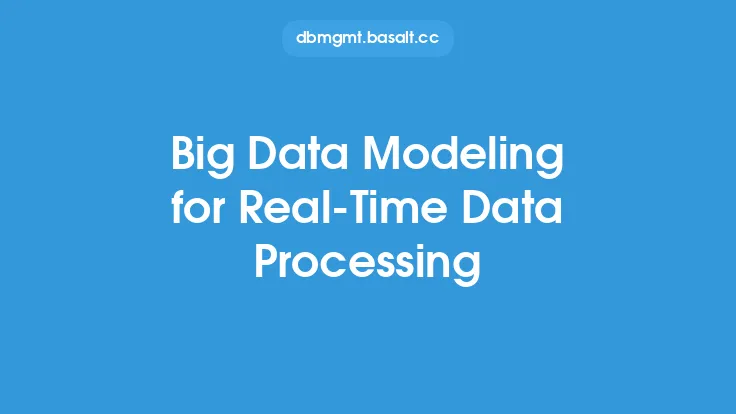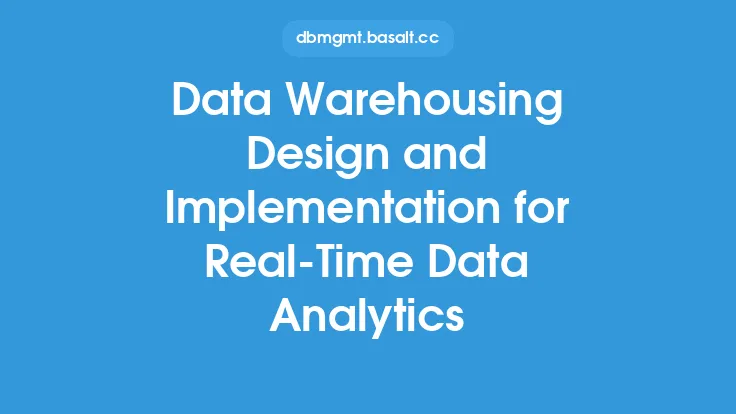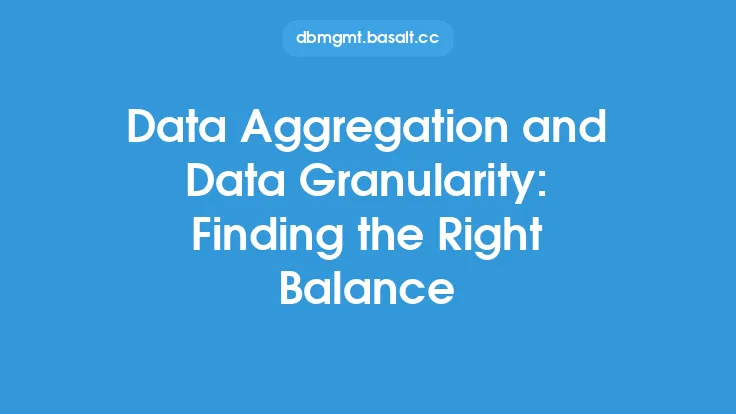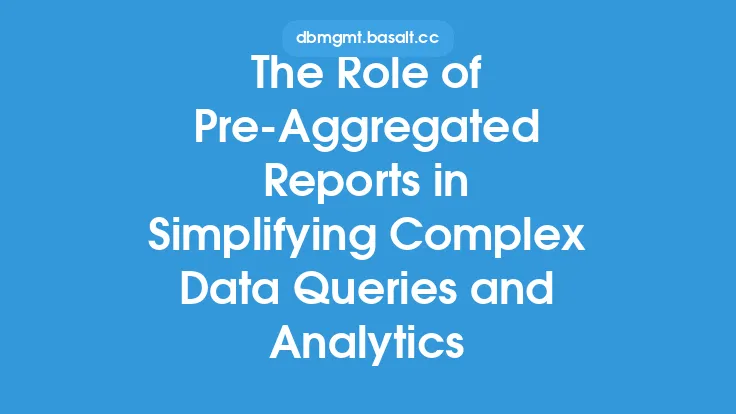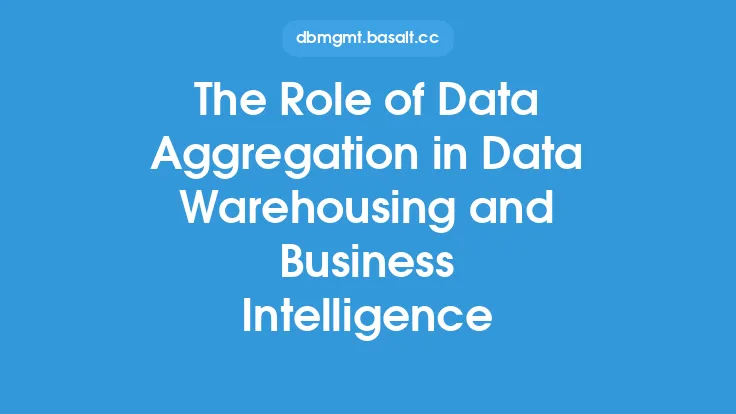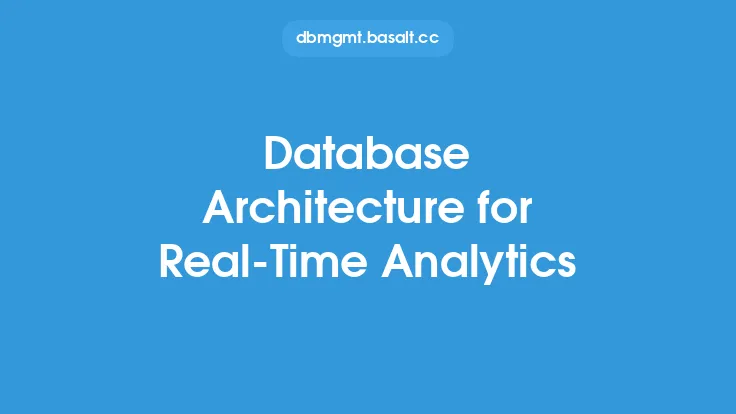Data aggregation is a critical component in real-time data processing, enabling organizations to collect, process, and analyze large volumes of data from various sources. This process involves gathering data from multiple sources, transforming it into a unified format, and then applying aggregation functions to extract meaningful insights. In the context of real-time data processing, data aggregation plays a vital role in supporting timely decision-making, improving operational efficiency, and enhancing customer experiences.
Introduction to Real-Time Data Processing
Real-time data processing refers to the ability to process and analyze data as it is generated, allowing organizations to respond promptly to changing conditions. This approach has become increasingly important in today's fast-paced business environment, where timely decision-making can be a key differentiator. Real-time data processing involves the use of specialized technologies, such as stream processing engines, in-memory data grids, and NoSQL databases, which are designed to handle high-volume, high-velocity, and high-variety data streams.
Opportunities in Real-Time Data Aggregation
Real-time data aggregation offers numerous opportunities for organizations to improve their operations, customer engagement, and revenue growth. Some of the key benefits include:
- Improved decision-making: Real-time data aggregation enables organizations to make informed decisions based on up-to-the-minute data, reducing the risk of errors and improving response times.
- Enhanced customer experiences: By analyzing customer behavior and preferences in real-time, organizations can provide personalized services, offers, and recommendations, leading to increased customer satisfaction and loyalty.
- Increased operational efficiency: Real-time data aggregation can help organizations optimize their operations, reduce waste, and improve resource allocation, leading to cost savings and improved productivity.
- Competitive advantage: Organizations that can process and analyze data in real-time can respond quickly to changing market conditions, stay ahead of competitors, and identify new business opportunities.
Challenges in Real-Time Data Aggregation
While real-time data aggregation offers numerous benefits, it also poses several challenges, including:
- Data volume and velocity: Handling large volumes of data at high velocities can be overwhelming, requiring specialized technologies and infrastructure to process and analyze the data in real-time.
- Data variety and complexity: Integrating data from multiple sources, each with its own format and structure, can be a significant challenge, requiring advanced data transformation and aggregation techniques.
- Latency and throughput: Ensuring low latency and high throughput in real-time data aggregation is critical, as delays can impact decision-making and response times.
- Data quality and accuracy: Ensuring the quality and accuracy of aggregated data is essential, as errors or inconsistencies can lead to incorrect insights and decisions.
Technologies for Real-Time Data Aggregation
Several technologies are available to support real-time data aggregation, including:
- Stream processing engines: Engines like Apache Kafka, Apache Storm, and Apache Flink are designed to process high-volume, high-velocity data streams in real-time.
- In-memory data grids: Solutions like Apache Ignite, Hazelcast, and GridGain provide in-memory data storage and processing capabilities, enabling fast data aggregation and analysis.
- NoSQL databases: Databases like Apache Cassandra, MongoDB, and Couchbase are designed to handle large volumes of unstructured or semi-structured data, providing flexible data modeling and aggregation capabilities.
- Cloud-based services: Cloud-based services like Amazon Kinesis, Google Cloud Pub/Sub, and Microsoft Azure Event Hubs provide scalable, managed platforms for real-time data aggregation and processing.
Best Practices for Real-Time Data Aggregation
To ensure successful real-time data aggregation, organizations should follow best practices, including:
- Define clear goals and objectives: Clearly define the goals and objectives of real-time data aggregation, ensuring alignment with business requirements and outcomes.
- Choose the right technologies: Select technologies that are optimized for real-time data aggregation, considering factors like scalability, performance, and data complexity.
- Ensure data quality and accuracy: Implement data quality and accuracy checks to ensure that aggregated data is reliable and trustworthy.
- Monitor and optimize performance: Continuously monitor and optimize the performance of real-time data aggregation systems, ensuring low latency and high throughput.
Future of Real-Time Data Aggregation
The future of real-time data aggregation is promising, with emerging technologies like artificial intelligence, machine learning, and the Internet of Things (IoT) expected to drive further innovation and adoption. As organizations continue to generate and collect vast amounts of data, the need for real-time data aggregation will only continue to grow, driving the development of new technologies, techniques, and best practices. By understanding the opportunities and challenges of real-time data aggregation, organizations can unlock new insights, improve operational efficiency, and drive business success in today's fast-paced, data-driven world.
